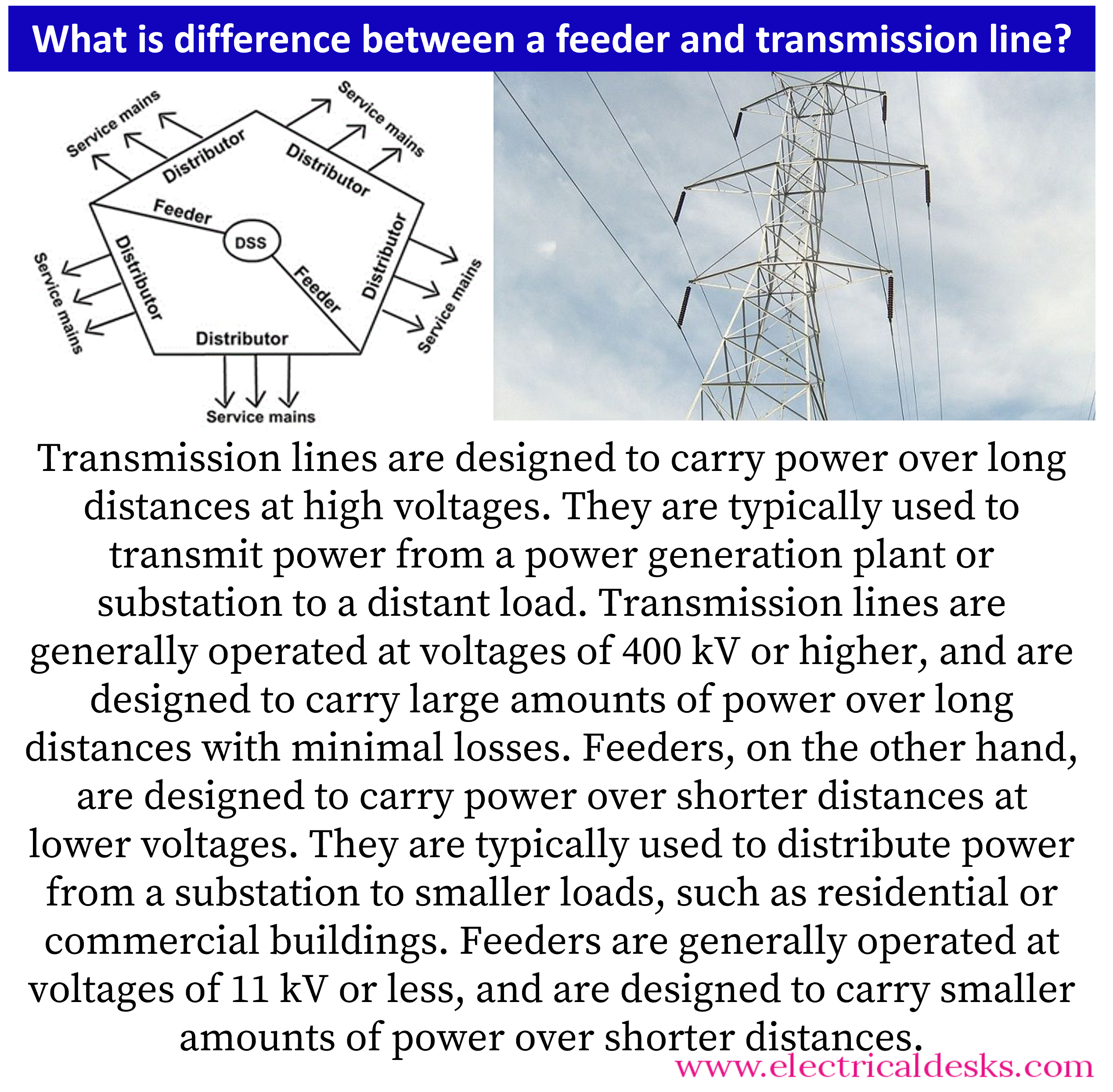Difference between Transmission line, Feeder, Distributors and Service mains:
Transmission lines are designed to carry power over long distances at high voltages. They are typically used to transmit power from a power generation plant or substation to a distant load. Transmission lines are generally operated at voltages of 400 kV or higher, and are designed to carry large amounts of power over long distances with minimal losses.
Feeders, on the other hand, are designed to carry power over shorter distances at lower voltages. They are typically used to distribute power from a substation to smaller loads, such as residential or commercial buildings. Feeders are generally operated at voltages of 11 kV or less, and are designed to carry smaller amounts of power over shorter distances. A feeder is an electrical distribution network that carries power from a substation to consumers. It is not a conductor that connects a generating station to an area where power is needed. Instead, it is a conductor that carries power from a substation, which is a facility that receives power from a generating station or other source and distributes it to consumers.
The cross-section area of a feeder is not determined by the current passing through it, but rather by the amount of power that the feeder is expected to carry. The voltage drop in a feeder is also an important consideration, as it determines the amount of voltage available at the load. The current passing through a feeder can vary depending on the load connected to it.
Distributors and service mains are both types of conductors that are used in electrical distribution systems. Distributors are conductors that are used to distribute power from a feeder to smaller loads, such as individual homes or businesses. They are typically designed to have a number of tappings, or connections, along their length to allow for the distribution of power to multiple loads.
Service mains are conductors that connect distributors to the consumer's terminals. They are typically used to bring power from the distribution system to the consumer's electrical service panel or other point of use.
Overall, the main difference between transmission lines, feeders, distributors, and service mains is the distance over which they carry power and the voltage at which they operate. Transmission lines are designed to carry power over long distances at high voltages, while feeders, distributors, and service mains are designed to carry power over shorter distances at lower voltages.

